#Nikon Camera Systems
Explore tagged Tumblr posts
Text
It only took 9 years .... American Dipper (Cinclus mexicanus)
At last after a 9 year wait!
The first time I saw an American Dipper was in November 2014. I was on a Bald Eagle workshop with Moose Peterson in Haines, Alaska. It was a very dull and dark day and I saw this tiny (compared to Bald Eagles) quickly working along the river bank. I asked what it was and Moose said an American Dipper. Of course the light was so poor I couldn’t get a good image. Unfortunately, I did not see it…

View On WordPress
#NikkorZ100400VRS#NikonLove#nikonnofilter#NikonZ9#ZCreators#(Cinclus mexicanus)#@Service.Photo#american dipper#Birding#Jemez Springs#New Mexico#Nikkor Z 100-400mm f/4.5-5.6 VR S#Nikkor Z TC-1.4*#Nikon Camera Systems#Nikon Z 9#Richard King Photography#wildlife photography#www.mothernatureimages.com#www.richardkingphoto.com
2 notes
·
View notes
Text
No, OM System Isn't the Only Brand That Can Stand Up to Wet Weather
Late last year, we announced new changes to our reviews system. This is on top of all the other testing that we’ve done for years and called on the industry for. As it is, we’re constantly revamping our system of camera reviews. Today, we’re beginning the start of calling out what we believe to be falsehoods in the photography world. And this one has to do with a false statement about wet…
#Canon EF to Sony E mount Metabones adapter#digital camera world#insurance#ip durability#ip52#ip53#ip54#leica#lenses#LensRentals#nikon#OM SYSTEM#panasonic#sigma#sony#tamron#weather resistance
0 notes
Text
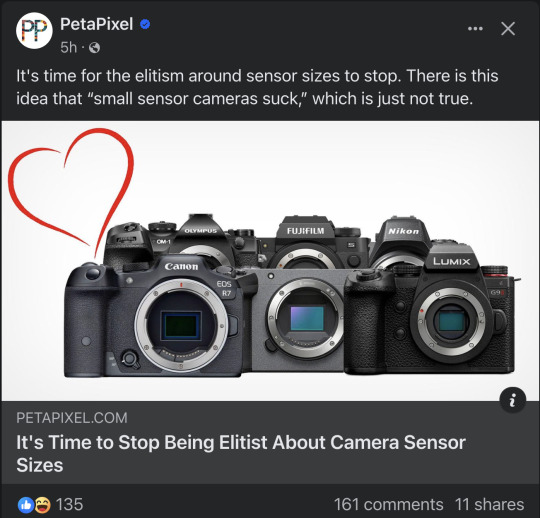
This article gets rewritten about every 3 months by someone who thinks they are writing it for the first time.
Also, no chance I am going into that comment section.
I'll make it very simple. Pretty much all cameras are great now. Most smartphone cameras are great.
So you can get great photos with *any* sensor size.
You just have to assess your needs and decide which system will help you achieve your photographic goals.
Full frame sensors make it much easier to...
Shoot in cramped spaces. Get background blur. Shoot a scene with bright brights and dark darks. (dynamic range) Shoot in low light with less noise.
APS-C sensors...
Slightly harder to get background blur. Not as good in cramped spaces. Slightly less dynamic range. Slightly more noise in low light. Give you near full frame quality at a lower price point.
Micro 4/3 sensors...
Give you lightweight and portable gear while maintaining the advantage of using different lenses. Can be more expensive. Great for beginner videography. Can do decent background blur with a speedbooster and fast lens. Give you a nice bump in quality over smartphones in challenging circumstances.
Smartphone sensors...
Are always in your pocket.
If you have the money and want to make getting good photos in challenging circumstances easier, get a full frame. Used full frame DSLRs are cheaper than they have ever been.
If you are on a tight budget and want everything a full frame does but don't mind it being about 1.5x harder to do so, get APS-C. If you go with Canon or Nikon, you can choose your lenses in a way that allows you to upgrade to full frame later on.
If you want to use a proper camera with interchangeable lenses but you don't feel like carrying a heavy camera bag with you everywhere, get a micro 4/3. Be warned, these cameras are usually more expensive than APS-C. They often have cool retro styling and try to give you a more fun photography experience. Panasonic M4/3 can be a great entry level videography camera. Fuji has some neat retro film emulation. Speedbooster accessories can allow you to retain some reasonable background blur.
For everything else, just use your phone because phones are great at everything except indoor low light situations.
87 notes
·
View notes
Note
Hello io! Happy holidays : ) ! I love your art and photography, I just wanted to know how do you take pictures? I’ve been looking into getting into photography myself as I don’t have much time to draw due to university.. Any camera recommendations? I really like the strange but also mellow ambiance in your photos.
hi anon! happy holidays! i hope you're having a nice, calm season, and that your health has been okay :-) thank you for the nice message!
it's funny, for me photography is even more of a casual hobby than drawing is, but i get so giddy whenever people like my photos, it's even greater of a compliment :D are you thinking about film or digital?
for film, i use an Olympus OM-2n with a vivitar series 1 28-90mm f2.8-3.5 lens, but that just happens to be the camera body and lens that i was able to pry out of a relative's closet. before that, i used a point-and-shoot, yashica t4 super... i am quite fond of the olympus om-2n as a camera body because it has a nice level of automation; it has an automatic exposure system that calculates a shutter speed based on aperture. it seems like all of the om system cameras have held up well and have a reputation for good quality
for digital, i use a nikon d3400 with the nikkor 50mm 1.8g lens- again, just an entry-level hobbyist dslr, it's never let me down.
i don't know if i can call myself knowledgeable enough to refer to these as recommendations! for film, it's worth asking family and looking around stores in your area that sell used goods... without falling into the trap of buying a "bargain" that'll cost ten times as much to fix
would much appreciate the advice of people who know more about this than i hehe
take care!
23 notes
·
View notes
Text

Windy City of Lights
At night, the Windy City transforms into a city of lights, illuminated by the orange and white hues of the Chicago Metropolitan Area. In this nighttime photo, taken by an astronaut aboard the International Space Station, light-yellow lights illuminate the city’s densely populated downtown area.
The Chicago Harbor and Navy Pier in downtown Chicago extend into Lake Michigan. Warm-hued lights illuminate sprawling roadways like Interstate 90, which stands out as the wide, orange line. The range of colors in nighttime cityscapes worldwide, including Chicago, is often due to the types of lighting used. High-pressure sodium lighting has a much warmer tone than the cooler, blue-to-green-hued light-emitting diodes (LEDs).
Flowing through the city, the Chicago River appears as a slender strip of darkness, running nearly parallel to interstates 55 and 90. The Chicago River connects Lake Michigan barge traffic to neighboring rivers, such as the Des Plaines River, through tributaries and various canal systems. The Des Plaines River appears as a dark feature between the metropolitan area and Chicago O’Hare International Airport. This river is lined with nature preserves, golf courses, and parks, all of which appear dark in this nighttime image. In urban landscapes, city lights outline dark and open areas like the Rosehill Cemetery and Big Marsh Park.
As Chicago expanded in the late 1800s, the city needed a solution to simplify navigation. The city was reorganized into a grid layout, restructuring street names, address numbers, and blocks into north-south and east-west orientations. This grid pattern is made obvious by the nighttime lights of the urban area. The warm-toned lights associated with residential areas contrast with the predominantly white lighting of commercial, industrial, and transportation areas. These land uses typically line highways and are spread across the outskirts of the Chicago area.
Astronaut photograph ISS070-E-105097 was acquired on March 1, 2024, with a Nikon D5 digital camera using a focal length of 400 millimeters. It is provided by the ISS Crew Earth Observations Facility and the Earth Science and Remote Sensing Unit, Johnson Space Center. The image was taken by a member of the Expedition 70 crew. The image has been cropped and enhanced to improve contrast, and lens artifacts have been removed. The International Space Station Program supports the laboratory as part of the ISS National Lab to help astronauts take pictures of Earth that will be of the greatest value to scientists and the public, and to make those images freely available on the Internet. Additional images taken by astronauts and cosmonauts can be viewed at the NASA/JSC Gateway to Astronaut Photography of Earth. Caption by Sara Schmidt, GeoControl Systems, JETS II Contract at NASA-JSC.
7 notes
·
View notes
Text
I really like my olympus camera but it does suck that it's the only camera from its era that can't accept lenses from any other system even with an adapter. Nikon, Canon, even the high end stuff like Leica and Hasselblad will accept other company's lenses with a cheap adapter but olympus will only take olympus
8 notes
·
View notes
Text


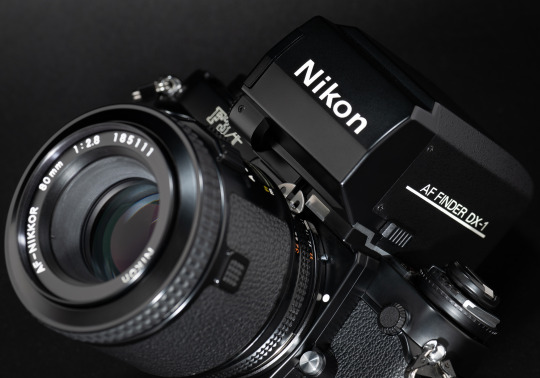

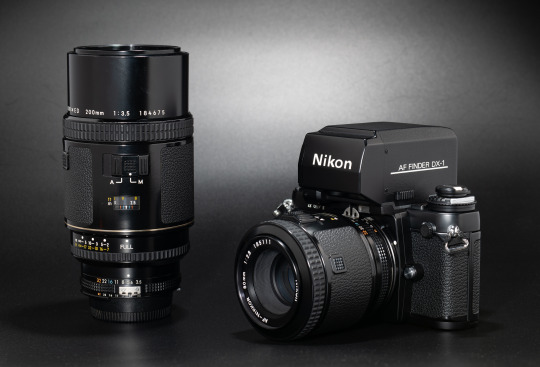
The Nikon F3AF of 1983 – an early, fascinating, ultimately unsuccessful attempt at practical autofocus in a stills camera.
Based on a standard F3 body, it added electrical contacts for two dedicated AF lenses, and a removable, separately-powered DX-1 head, which provided through-the-lens (TTL) autofocus. Focusing elements in the lens are moved by motors built inside the lenses themselves – a concept that is now standard in modern SLR and mirrorless systems.
Basically, take a Nikon F3 and an AT-AT Imperial Walker, smash them together, and you have the F3AF.
8 notes
·
View notes
Text
Pentax 645Z Review
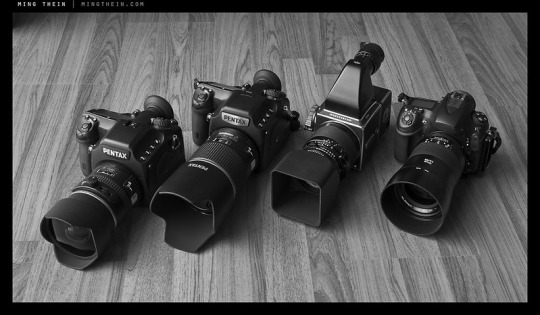
Medium-format cameras offer truly spectacular resolution, but until now, it's always come best camera alongside a difficult compromise. With the Pentax 645Z, that changes. Building on 2010's 645D, the Pentax 645Z offers features that are rare or in some cases unique in a medium-format camera. Pick up its weather-sealed body, and you'll find both live view and video capture on offer, not to mention an extremely wide sensitivity range, 27-point phase-detect autofocus system -- and compared to rivals, very swift performance too! And of course, you'll get the incredible detail-gathering capability of medium-format, plus a really big, bright viewfinder. Is it time you considered moving up from full-frame? Read on and find out!
Pros Phenomenal resolution and detail; Great high ISO performance; Rugged, weather-sealed body; Huge, bright viewfinder; Fast autofocus works well in low light; Swift performance for a medium-format camera; Good battery life; Shoots Full HD video
Cons Quite bulky compared to an APS-C or full-frame DSLR; Autofocus points clustered near center of frame; Most lenses aren't weather-sealed or optimized for digital; Prone to aliasing artifacts (but so are most high-end cameras these days); Attracts a lot of attention from passers-by
Price and availability Available since June 2014, the Pentax 645Z is priced at US$8,500 body-only.
Back in early 2010, Pentax launched the 645D, a medium-format digital SLR that it had been developing for the previous five years. It might have been a long time coming, but it was nonetheless exciting for it. The 645D leapfrogged rivals Canon, Nikon and Sony with two-thirds greater sensor area than a full-frame sensor, yielding a unique look and shallower depth of field. At the same time, it was vastly more affordable than offerings from medium-format makers like Hasselblad and Phase One, yet rugged enough to be used in the field.
Pentax 645Z Review -- Front view with lens The reason Pentax -- since taken over by Ricoh -- could offer its camera at a more attractive price-point than other medium-format products was pretty simple. Much of the design work for the 645D could be shared with the company's mass market, APS-C DSLRs, where Hasselblad and Phase One -- neither of which sells consumer SLRs -- had to bear the entire cost of development solely with their medium format products.
While Pentax lacked (and indeed, still lacks) a full-frame DSLR, the 645D served both as an aspirational model for the enthusiasts to look up to, and as something genuinely different to attract pros for whom that resolution and medium-format look was more important than high-speed capture. And boy, did it ever offer a lot of resolution by 2010 standards. (In fact, it's only recently that we've started to see cameras with smaller sensors catching up.) When we first put the 645D in our lab, we were amazed to find that it picked up details we'd never even noticed in our test scenes -- details that we couldn't even see with our own eyes, until we pulled out a magnifying glass to confirm them.
Pentax 645Z Review -- Weather seals Just like the medium-format film cameras in whose footsteps it followed, the 645D was never going to be a mass-market camera. Medium-format is an even smaller niche than it was in the film days, but the 645D was nonetheless a very important camera for the company, and its followup -- the Pentax 645Z -- is no less important.
Just like its predecessor, the Pentax 645Z shares much with Ricoh's flagship APS-C DSLRs -- and with four years of development having taken place on the APS-C front since the 645D was launched, there was no shortage of new features for it to inherit. But the most important feature of them all is at its very heart, a brand-new, Sony-sourced 51-megapixel CMOS image sensor. It's coupled to a PRIME III image processor, as first seen in the K-3, and the 645Z also inherits that camera's 27-point SAFOX 11 autofocus and 86,000 pixel RGB metering systems.
The 645Z's new image sensor allows a spectacularly wide sensitivity range, especially by medium-format camera standards, covering everything up to ISO 204,800 equivalent. It also provides both live view and Full HD movie capture capabilities, neither of which its predecessor was capable of. And performance has taken a big step forwards, at least compared to other medium-format cameras. This still isn't a sports shooter, but it'll shoot at almost triple the speed of the 645D. You'll also be able to review photos post-capture in less than half the time.
2 notes
·
View notes
Text
First Film Camera Quick Guide!
I was putting together a list for a partner who's been interested in buying a film camera that can do a little more than his point and shoot and it was recommended to me that I share the picks I sent him!
This is by no means comprehensive but these are the four that come to mind for me. I've kept the options $200 and below (with lens, based on ebay listings) with the idea being if this is your first film camera, or first film SLR, you probably don't want to spend much more than that.
For anyone who's been shooting for a while who has some other options to share please feel free to mention them so nothing gets overlooked!
Nikon F4 ($200)

Pros: It was Nikon's first professional auto focus camera and also has multiple auto exposure modes from full auto, to aperture and shutter speed priority! It has great build quality, Nikons are known to be indestructible. It has advanced metering to help make sure everything in the frame is exposed properly. The F mount has been around for 70 years and counting and has the largest library of lenses available, many of which are fairly inexpensive. It also has the best viewfinder on this list for glasses wearers due to its size!
Cons: It's a tank! It's big and chunky and much like many other auto focus film cameras of the era it has that ugly DSLR look. It has a Swiss army knife worth of features many of which you may never use!
Canon EOS Rebel GII (>$100)
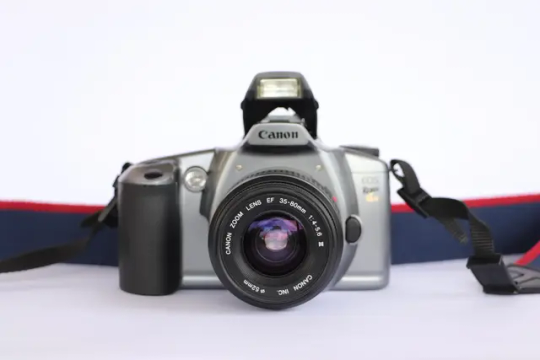
Pros: You can get the body and a lens for under $100 making it the cheapest option on this list! It's capable of auto focus and a number of different exposure modes that let you learn various settings or take pictures with the ease of a point and shoot. The EOS mount lasted for 30+ years so there's a wide variety of lenses across a wide spectrum of prices.
Cons: It's an enthusiast grade camera with consumer grade build quality and a somewhat limited feature set for a late era film SLR --but all the right features are included. It's big, chunky, kinda ugly.
Olympus OM-2 ($150)

Pros: It's really small for a professional camera! It has that classic film SLR look, and it was in FLCL! It's manual focus, but does have some auto exposure tools to assist you. You'll have to dial in aperture to your liking but shutter speed can be determined for you. You can grab one of these with a lens for around $150.
Cons: It will have a steeper learning curve than the auto focus cameras on this list. The OM mount library is pretty limited and while the 50mm lens you probably get with it will be cheap most other focal lengths get a little more pricey due to availability.
Nikon FE ($200)

Pros: Another small manual focus camera with auto exposure features! It uses the F mount so it's an easy system camera to grow into if you think you'll want to experiment with different focal lengths along the way! It's a Nikon so it'll probably outlast us all.
Cons: It's pricier up front than the OM-2 and if you don't think you'll want to experiment with different focal lengths down the line it probably isn't worth it!
Point & Shoot!
If you're looking for a point and shoot my main recommendation is to buy anything that's $50 or less. They all more or less work the same and they're all ticking time bombs of 90s consumer electronic goodness.
Facebook market place is a sadly a great place to find them, and where I got my beloved little Olympus MJU for $20 three years back!
Final Frame
Like I said up top, none of this is definitive! If you find something you think you can grow into that gets you excited to get out and shoot that's the camera for you! The most important thing is to have fun and make some art! Enjoy <3
#35mm film#photography#film photography#cameras#film cameras#camera gear#buyers guide#nikon f4#canon eos rebel gii#olympus om2#nikon fe#point and shoot cameras#film slr
2 notes
·
View notes
Note
I am sorry if this is an annoying question but do you have a guide or suggestions for picking out a first camera for someone who wants to take pictures of nature, specifically insects and other small things?
Hi! Not annoying at all!
You've got a few routes to this but all will require a macro lens.
In all cases I recommend buying second hand if you're in a country where it's safe to do so (any EU or NA country would be fine, for instance). You can use mpb.com or keh, it's usually less of a hassle than ebay or local marketplaces.
You could get something like a Nikon D7200 with a 105mm 2.8 AF-S G macro or a 60mm 2.8 G Macro. That's the cheaper option without compromising on quality. I recommend the 105 over the 60 because the 105 has stabilisation and for macro photography it is a must have.


A D7500 would be a bit better but frankly At that point I'd rather get a Z50 (or Zfc, see below) because then you'd be in a future proofed camera system (DSLRs — "D" cameras — are not produced anymore only mirrorless cameras of the Z system will come out) but then you'll need to get an FTZ adapter so you can still use the same, older lenses on the Z cameras like shown here:

If money isn't too much of a concern and decide to go for a Nikon Z camera you could get the native lenses (so you don't need an adapter). They'll perform a bit better too. Then it's either the NIKKOR Z MC 105mm f/2.8 VR S lens or the NIKKOR Z MC 50mm f/2.8 lens. Out of the two, once again, the 105 makes more sense (but is more expensive) because it is stabilized. Z cameras also have ibis so the 50mm would work too but you'd probably need to be closer to the subject you're photographing with this lens.

If you enjoy nice looks in a camera rather than a Z50 you can go for a ZfC. Its retro look is really a selling point but it would probably be harder to find second hand.

All of these recommendations have been of APS-C cameras, which makes sense for macro-photography (smaller sensor with 1:1 lens = subject is bigger on them).
If you've got an even bigger budget though, I would consider a second hand Z7, which is an imaging beast but that would be an other discussion entirely.
Other brands would have similar offers but bang-for-buck wise Nikon makes a lot of sense especially if you plan to grow into the hobby. Canon is unfortunately known for being a heartless cash-grabber. While Sony will work but not have a cheaper DSLR option. Fujifilm APS-C is unfortunately overhyped in my opinion, so Nikon makes more sense for this particular request.
Not that along side the 105 you'll want another lens to be able to do other things. For that either a 35mm 1.8 DX on the D7200 (or with FTZ on a Z camera) or a Z 28mm F2 on a Z camera will do.
Note that none of these are zoom lenses, they're prime fixed focal length lenses (aka prime lenses). They're more qualitative than zooms imho and the limitation of having one fixed field of view actually makes taking pictures more engaging as you have to move around with your feet to get the compositions you want.
3 notes
·
View notes
Text
Sony RX100 VII Thoughts After Two Months
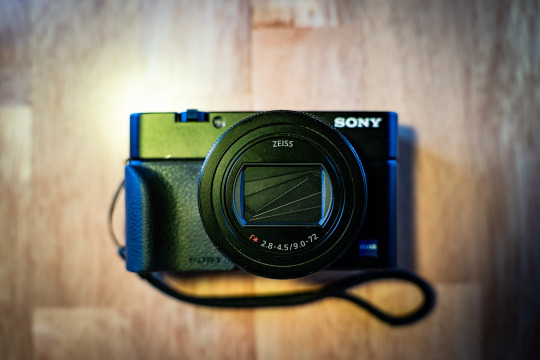
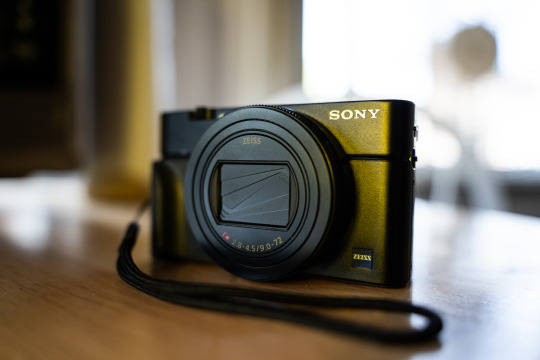
PROS:
Stacked sensors are the future. Well, technically the present considering that Canon, Nikon, Sony, Fuji, and OM Systems all use stacked sensors in their top of the line cameras. Either way, finally getting to experience shooting with one on a daily basis has made me want one in pretty much any camera going forward. The benefits are twofold: Not only do you get shutter speeds up to 20 frames per second, and without a mechanical shutter flipping in the way obscuring your view in between shots, but you also get no rolling shutter while doing it. Pretty much every Sony camera can shoot 10 fps bursts with the silent shutter, but any movement can give you a jello-like effect since the sensor reads out so slow on non-stacked cameras. The only con, at least on this camera, is that you can’t shoot flash at higher than 1/100 with the electronic shutter. That’s still plenty fast for a lot of stuff, but well below the 1/2000 you get when shooting the mechanical shutter.��
The fast frame rate wouldn’t make much of a difference if the camera was bad at autofocusing, but this camera is great at it. It has a lot of the same fancy focusing stuff that my full frame Sony has like human/animal eye autofocus and all the tracking modes I’m used to. It actually makes the camera pretty solid for wildlife if you can get close enough at the 200mm end.
Speaking of that, the 24-200mm equivalent is a great range, and one that I missed a lot since I traded away my Tamron 28-200 to help cover the cost of my A7RIV. The small size and extra 4mm on the wide end actually makes it even more convenient than that Tamron.
Aside from covering a broader range than the 24-70 equivalent lens from the older RX100 cameras, this lens also seems noticeably sharper. The last RX100 model I had, the Mk. IV, just didn’t seem as crispy as this lens is.
It has a touchscreen! It’s wild to think that the previous RX100 cameras I owned didn’t have this basic ass feature, but Sony was very late in putting touch screens in their cameras. Ironically, I don’t really use it in this one because the AF is good enough that I can just do focus and recompose with tracking.
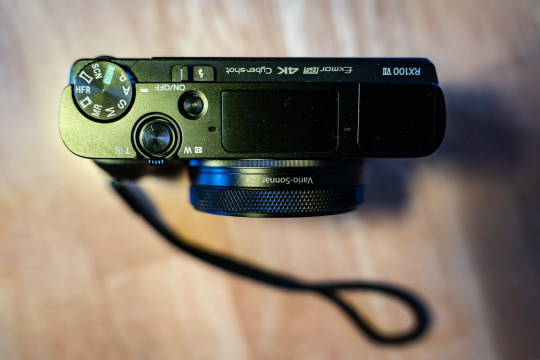
CONS:
It’s still only a 1” style sensor so high ISO isn’t the cameras strong suit. Programs like DXO PureRAW help a lot and let you get somewhat usable images at ISO 6400 in a pinch, but you’re kinda pushing things at that point.
While the lens is sharper and covers a wider range than the older models, it’s also significantly slower. At 24mm equivalent it’s already at f/2.8 where the old cameras were f/1.8. It’s f/3.2 at 25mm, f/3.5 at 33mm, and f/4 at 40mm. From 109mm to 200mm you’re at f/4.5. The relative slowness of the lens combined with the small sensor means that this can struggle getting quality images in low light without a tripod or something.
No USB-C. My Fuji, Ricoh, and larger Sony all have USB-C charging, which is amazingly convenient when traveling. I haven’t really gone anywhere with this camera yet, but having to account for a micro USB cable is annoying since pretty much everything aside from my iPhone uses USB-C.
It’s expensive. Just like my Mk III and Mk IV I got it used so it was cheaper than retail, but the copy I got cost about twice what I paid for the previous models.
Start up time is just a tad bit slower than I’d like. The GRIII and X100V both beat it that regards, albeit those aren’t zoom lens so I have to cut the Sony some slack.
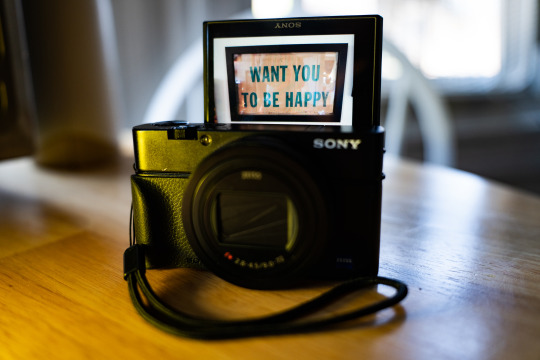
SAMPLE PHOTOS:
(The sample photos were edited in Lightroom Classic and DXO PureRAW2. Also, the sensor creates a roughly 2.7x crop factor, so the 9-72mm lens equates to 24-200ish)
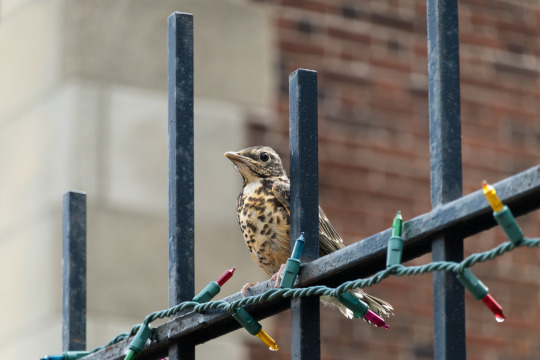
Young Bird | ISO 160. 72mm. f/4.5. 1/200.
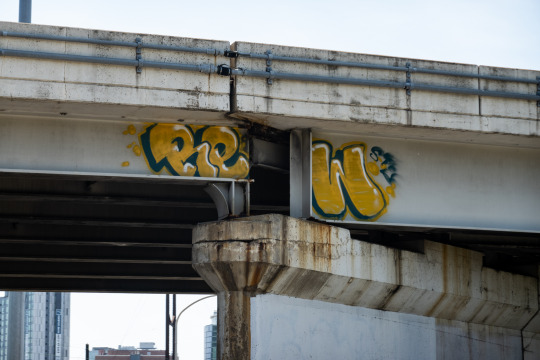
Graffiti Shot from a Car | ISO 100. 33.98mm. f/4. 1/400.
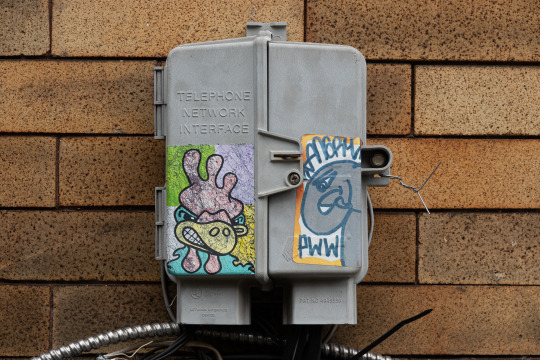
Stickers | ISO 100. 29.67mm. f/4.5. 1/100.
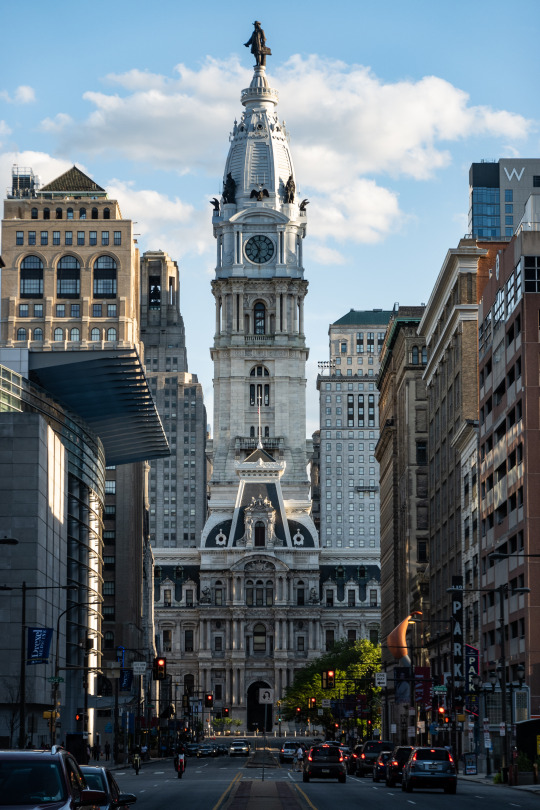
City Hall | ISO 100. 38.13mm. f/4.5. 1/200.
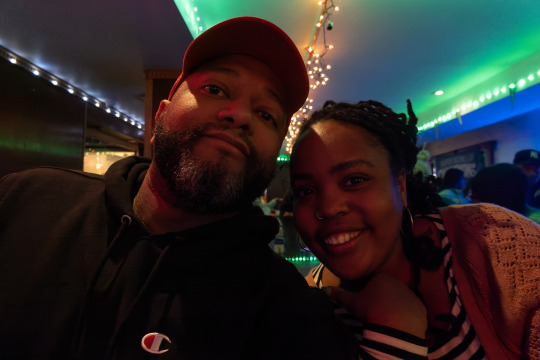
Flip Up Screen Selfie with My Friend Hanae | ISO 3200. 9mm. f/2.8. 1/40.
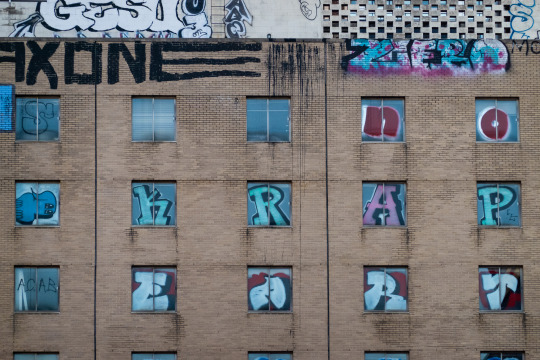
Zoomed in Graffiti | ISO 640. 72mm. f/4.5. 1/500.
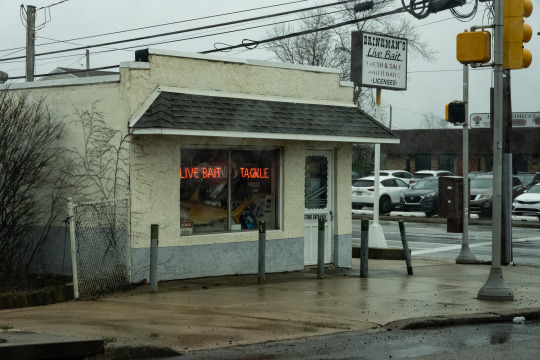
Fishing Store Neon | ISO 800. 28.67mm. f/8. 1/200.
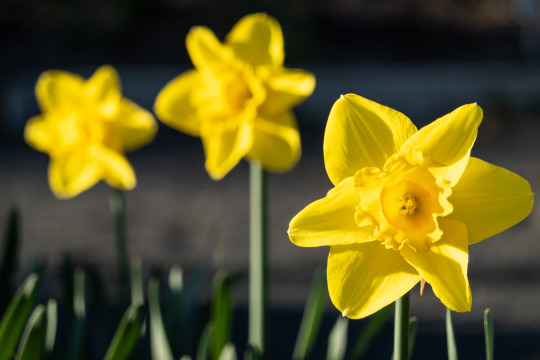
Flowers | ISO 200. 72mm. f/5. 1/640.
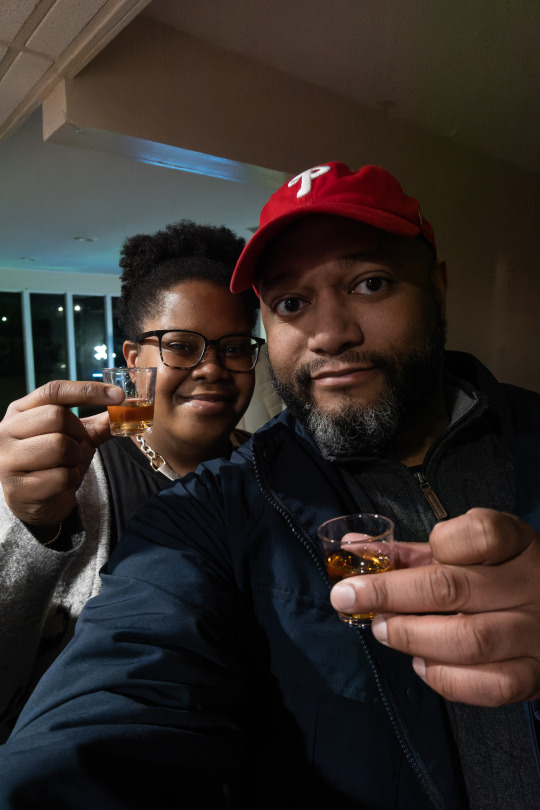
Selfie Shots with My Sister | ISO 3200. 9mm. f/2.8. 1/100.
30 notes
·
View notes
Text
Prothonotary Warbler (Protonotaria citrea)
Spring Bird Migration USA This visit to Maggee Marsh Wildlife Area in Ohio is the first time that I have seen the Prothonotary Warbler. It is quite different from most other Warblers to look at as it does not have a distinctive cap or stripes along the body. Yes it does have a distinctive shade of yellow, as do many warblers. In fact the name is because the plumage represents the yellow of robes…

View On WordPress
#MaggeeMarsh#NikkorZ100400VRS#NikonLove#nikonnofilter#NikonZ9#ProthonotaryWarbler Protonotariacitrea#SpringBirdMigration#ZCreators#(Protonotaris citrea)#Maggee Marsh Wildlife Area#Nikkor Z 100-400mm f/4.5-5.6 VR S#Nikkor Z TC-1.4*#Nikon Camera Systems#Nikon Z 9#OH#Prothonotary Warbler#Richard King Photography#Spring Bird Migration USA#www.mothernatureimages.com#www.richardkingphoto.com
2 notes
·
View notes
Text
Try Our Portrait Photography Lightroom Presets and Fall in Love
Portrait photographers are going to love this! With the Phoblographer’s presets, you can speed up how you work in Lightroom. You folks asked for them, and now you’ve got them! Over the years, the Phoblographer’s staffers have tested various cameras and lenses as well as film emulsions. So we decided to make Lightroom presets that look like the classic film look that you’d see in magazines. In…
#adobe#adobe lightroom#camera#canon#fujifilm#leica#lightroom presets#nikon#olympus#OM SYSTEM#panasonic#portrait photography#portrait presets#raw#sony
0 notes
Text
i'm so good at photography
it was 2010 when all i had was a dream to own my very first dslr, i made some money from graphic design commissions and bought one, it was a nikon d3100... weeks before i got it i was watching youtube videos on iso, shutter speed & aperture so that i'd be able to shoot manual mode when i got it... you would have thought i was shooting for years the way i was getting all my exposures and compositions right... i got a job at beaches (sandals) as a resort photographer where i did photoshoots in the evenings and roved the beaches and waterparks by day taking pictures of kids... all those images i took, hundreds of thousands that helped to hone my skills, there aren't many shooters like me with the experience that i have... when 2012 came around i left sandals and started working on cruise ships, during the training in miami i said that i wanted to document my travels on film so i made an eBay account and bought a yashica, that's how i started shooting on 35mm... during my contract i didn't really like the yashica because i thought i wasn't getting any good shot or if they were in focus because it was a rangefinder so i bought my first slr, a canon ae1 program... this is when i started to shoot like it was my last day on earth, loved that camera so much.. i had it with me in europe, Australia, south america, alaska and hawaii.. all that time i was still shooting digital on the side so i got a nikon 610 which was my first full frame digital camera and a 85mm to go with it, that was such a nice combo... i left cruise ships in 2015, there was no way to develop my film rolls in jamaica so i decided to start developing from home.. after about 2 years i decided i would just shoot exclusively on film and that has helped me to develop my skills so much... i learned stuff like sunny 16 & the zone system, now i hardly use light meters in the day or even in the night.. i've come such a far way and i am so grateful for that you don't even know, all i do is shoot everyday even if it's one photo or a selfie, i just hope that all this time spent on my craft isn't wasted and i will start selling prints for thousands of dollars and get to go on assignments around the world...
#jamaica#photography#35mm#filmphotography#canonae1#d3100#d610#txt#txt post#text#text post#my text#textos#i be yappin#i feel like i could do so much more and be more talented#film
2 notes
·
View notes
Text
Canyon Lake, TX 2023
I meant to make a post about this trip sooner but never got around to it lol
Anyway, my family and I went to Canyon Lake, TX, in December 2023. It's about 40 miles from San Antonio for those who aren't familiar. There are not a lot of activities to do here; it is mostly just a pretty place to go and relax.
Camera info: Nikon D750, Pentax K1000, Instax mini Evo
Day 1 12/17/2024
After about a 4-hour drive, we arrived at our Airbnb and got unpacked. Even though we weren't near the lake, we still had an amazing view from the house: huge hills covered in trees whose leaves ranged from green, red, and yellow.
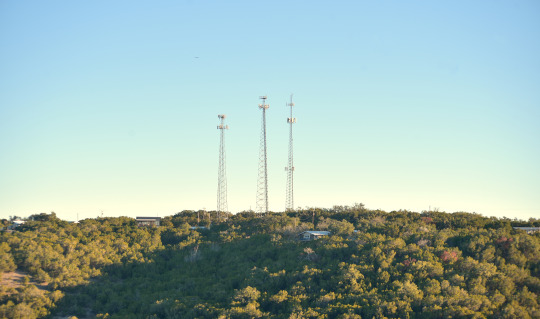
The last time I was in the Texas Hill Country, I didn't see any deer or other wildlife, but this time I saw some! A group of deer came out of the bushes while I was checking out the rest of the rental house. I grabbed my camera and took some pictures.

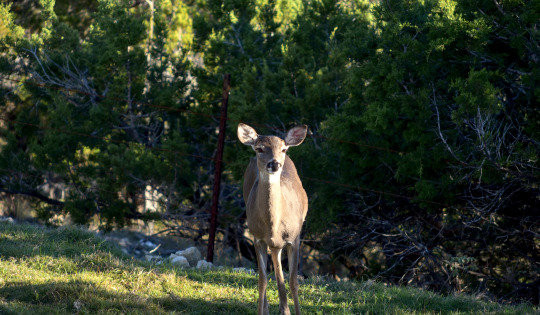
I have never been able to successfully take a photo of a deer before. They always run away before I can get the shot, and I'm not really a wildlife photographer, so I don't have the right lens to get close up. But these guys walked up so close to the house deck, all I had to do was stand perfectly still. ^_^
Day 2 12/18/2024
So to start the day, we went to a trail that was behind our Airbnb. We walked around and it had a nice view but it was pretty much just a big circle lol
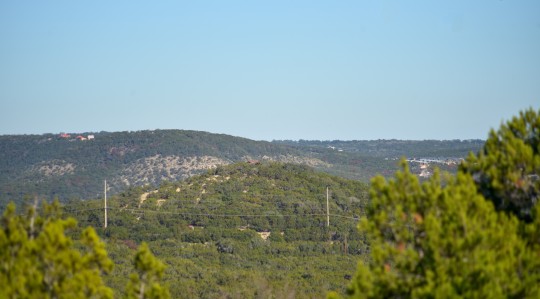
Since there wasn't much here, we went to the main attraction: The Canyon Lake!

Canyon Lake is a reservoir on the Guadalupe River. The construction of the dam was finished in 1964 and serves as flood control and as a water supply for communities near the dam.
The wind was blowing hard against my face as I walked across the dam. When I looked forward, I could hear the wind, the people, and the cars down below, but when I looked to the side and faced the shimmering blue lake, everything went quiet. The way the harsh wind hit my ears literally blocked out everything else.

This gave me one of those feelings that you can't really explain or understand. My mind was completely clear—no weight, no tension, just nothing. Complete non-existence
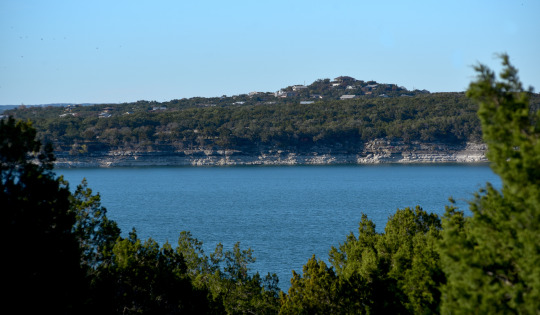
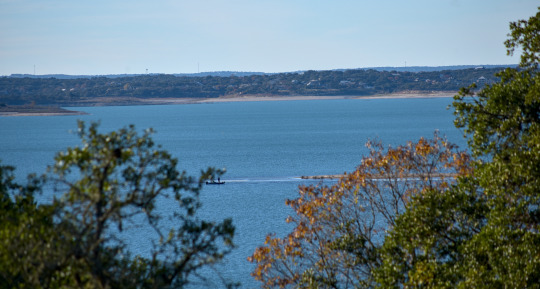
After walking around the lake, I sat on the rocks and took some more photos. The water was so blue and contrasted perfectly with the white rocks.
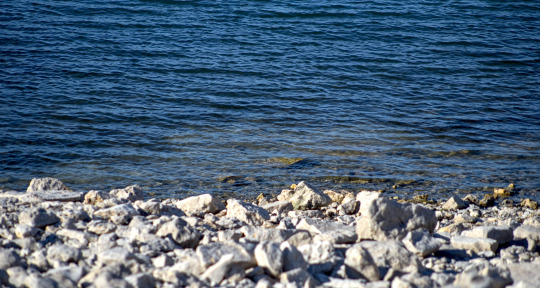
Day 3-12/19/2024
This was our last day, so we decided to go on a cave system tour. Unfortunately, I didn't get any good pictures here since we were part of a larger group and it was quite dark lol. It was very interesting and a nice way to rap up the trip.
This was a very pleasant little vacation, especially since I have not gone anywhere since the start of covid. It was nice to get out and go to a different place lol
Website
Instagram
prints
#photography#original photography on tumblr#original photographers#landscape photography#nature photography#photography blog#tumblog#digital photography#original content#original post#art photography#original art#texas hill country#photographers on tumblr
3 notes
·
View notes
Text

Exploring Russia’s Krenitsyna Volcano
An astronaut aboard the International Space Station took this photo of Onekotan Island while orbiting over the northwest Pacific Ocean. Onekotan is part of the Kuril Islands, an archipelago extending between the Kamchatka Peninsula in Russia and Hokkaido in Japan. The photo shows Krenitsyna Volcano, located on the southern side of the island.
The low-oblique angle of the photograph accentuates the terrain, particularly cliffs, coastlines, and mountains. Note that the photo has been rotated (north is down) to minimize an optical illusion known as relief inversion.
The Tsar-Rusyr caldera is the crater-like depression visible in this image. Calderas form when the ground collapses into a partially emptied magma chamber during a large eruption. This caldera is surrounded by steep 300-meter (1000-foot) cliffs that cast shadows along the eastern interior of the volcano.
The caldera holds the blue waters of Kol’tsevoye Lake, which contrasts with the surrounding vegetated summer landscape. Reaching depths of up to 370 meters (1,200 feet), the lake is one of the deepest in Russia. Its surface reflects sunlight back to the camera, producing sunglint, and it also mirrors the clouds drifting above the central peak.
Situated at the center of the caldera is Krenitsyna Peak, which stands approximately 1,300 meters (4,200 feet) above sea level. The slopes of this stratovolcanic peak consist of dark-colored valleys and ridges, caused by volcanic flows and erosive processes, that reach the surface of Kol’tsevoye Lake. The last eruption of this complex occurred in November 1952 and was categorized as “moderate,” with a Volcanic Explosivity Index (VEI) of 3.
West of the caldera, a mountain system is visible on the right side of the image. This rugged terrain contrasts with the opposite side of the caldera, where the landscape flattens out as it reaches the Pacific Ocean. Small patches of bright snow and ice remain in the valleys between the mountain and the coastline.
Astronaut photograph ISS069-E-71110 was acquired on August 19, 2023, with a Nikon D5 digital camera using a focal length of 1,150 millimeters. It is provided by the ISS Crew Earth Observations Facility and the Earth Science and Remote Sensing Unit, Johnson Space Center. The image was taken by a member of the Expedition 69 crew. The image has been cropped and enhanced to improve contrast, and lens artifacts have been removed. The International Space Station Program supports the laboratory as part of the ISS National Lab to help astronauts take pictures of Earth that will be of the greatest value to scientists and the public, and to make those images freely available on the Internet. Additional images taken by astronauts and cosmonauts can be viewed at the NASA/JSC Gateway to Astronaut Photography of Earth. Caption by Chloe Locke, JETS II Contract at NASA-JSC.
5 notes
·
View notes